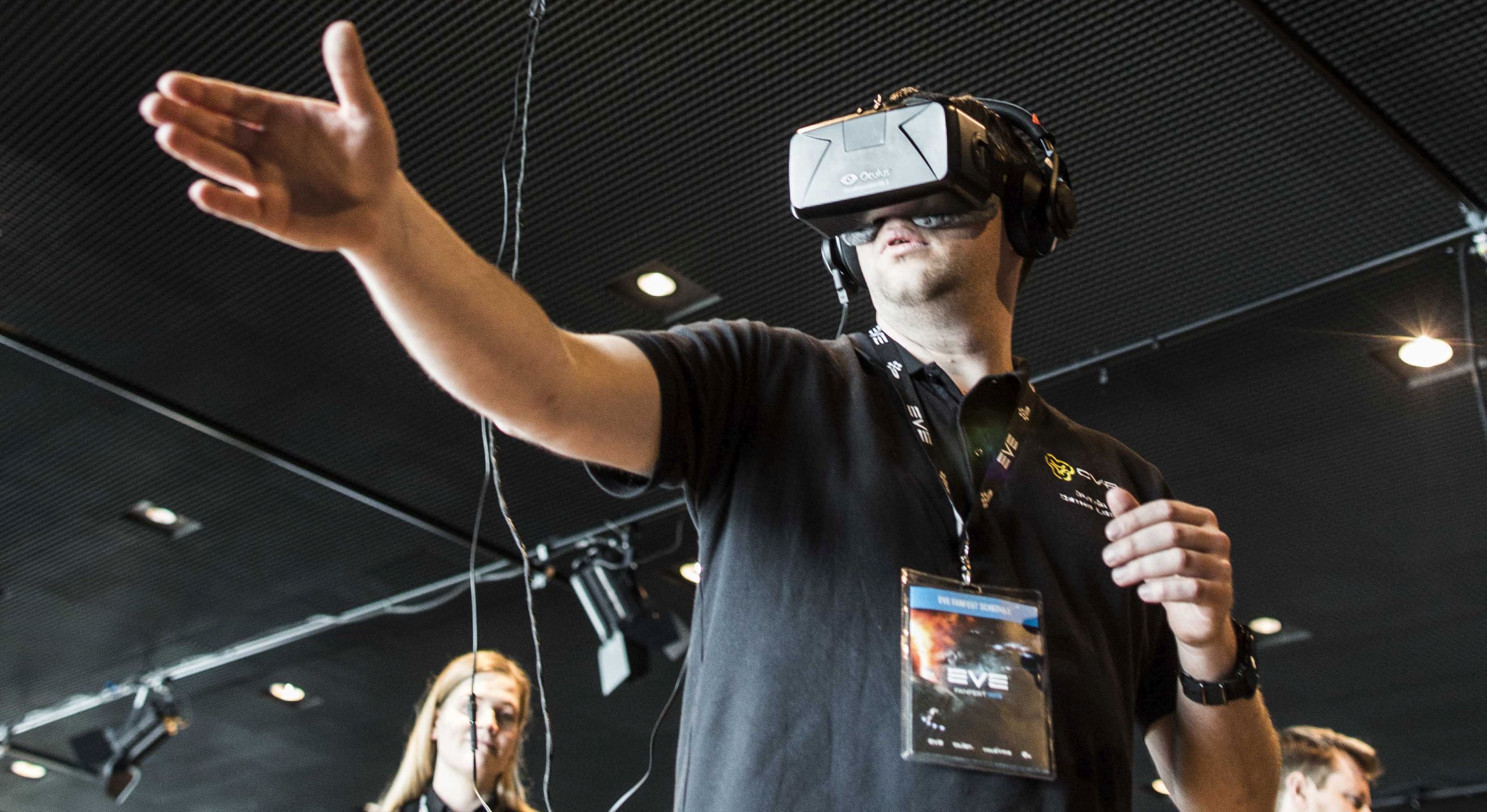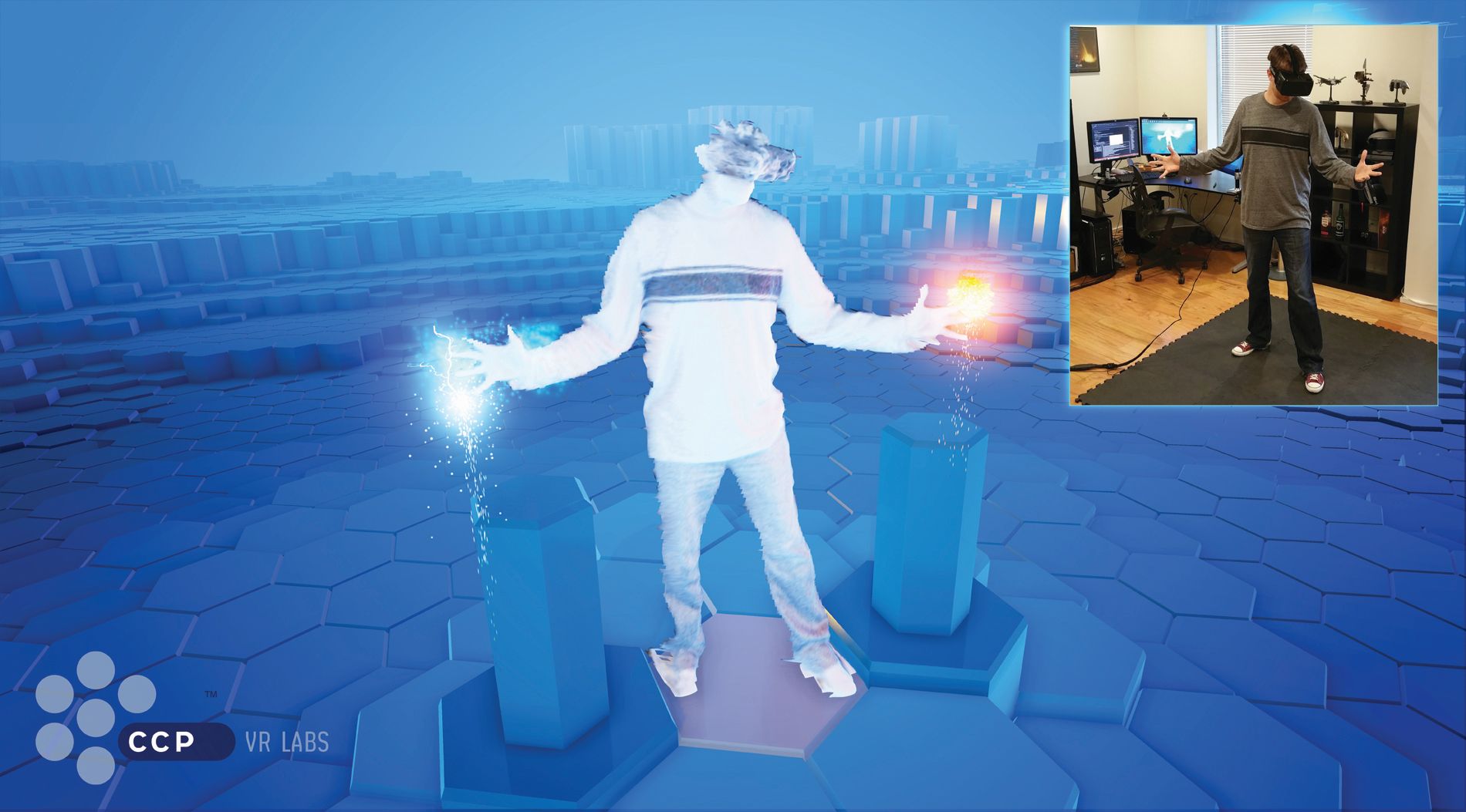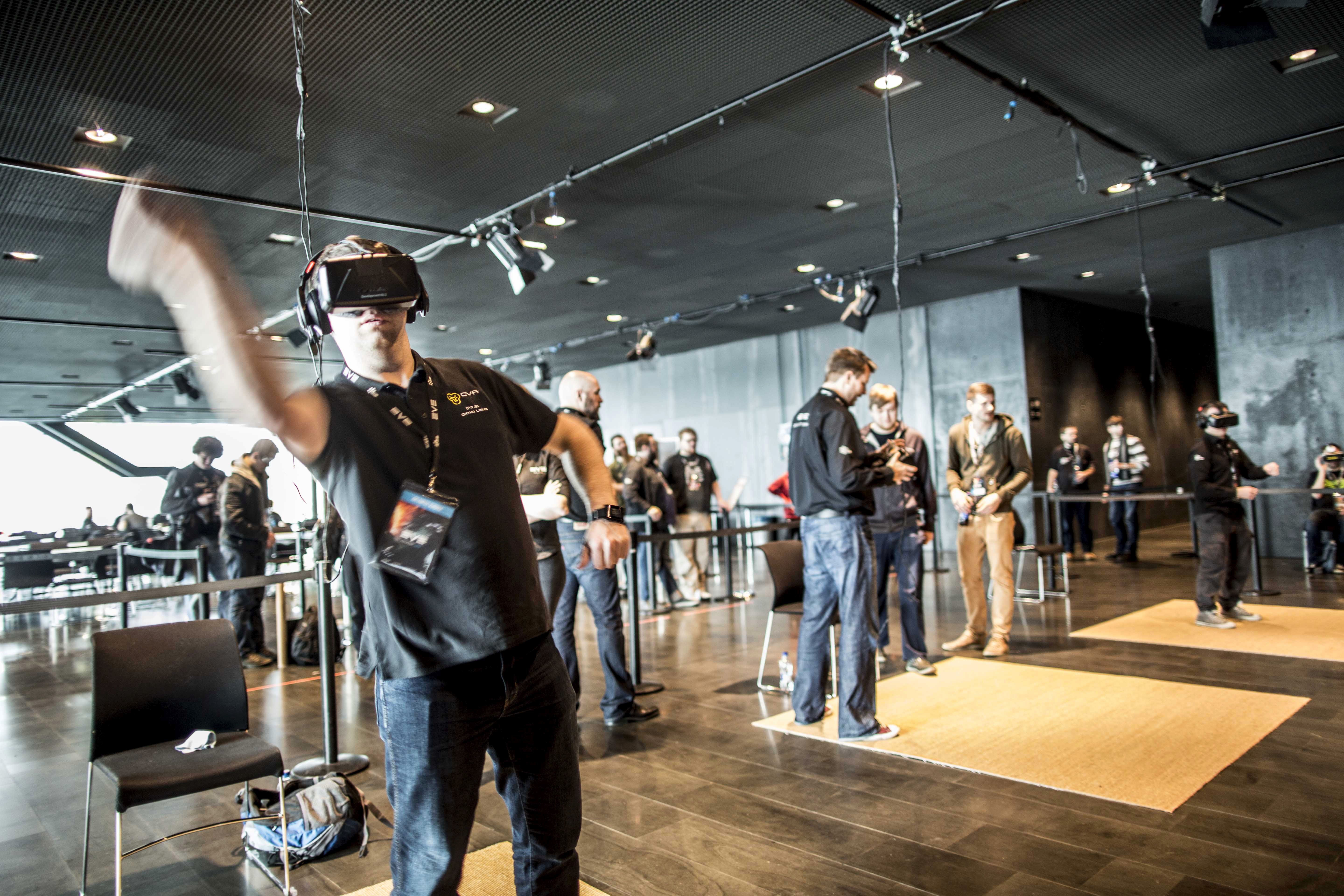The psychology of CCP's virtual reality prototypes

"The strongest component is really EVE: VR,” says Morgan Godat, executive producer of CCP’s VR Labs. I’ve asked him to explain the thinking behind the initiative—a series of VR prototypes that the studio is demoing at this year’s EVE Fanfest. His answer references the project that would later become EVE: Valkyrie. It’s not even out yet, but for CCP, Valkyrie has proven to be a massive success. “It was this homebrew project that turned into something real and really cool,” says Godat. “It really inspired a lot of people around the company.”
VR Labs is CCP’s attempt to formalise that process. Prototypes were created by a small team in Atlanta and Fanfest is a chance to gather feedback from the studio’s biggest supporters. None of them are officially games yet, but the hope is that, as with Valkyrie, at least one of the prototypes will prove popular enough to justify its continued development. “For the fans downstairs,” says Godet, “the EVE universe is already more meaningful than real life on a monitor. Imagine how it would be in a VR helmet. Imagine that sci-fi universe in that medium. It seems really powerful.”
In Valkyrie, the player’s avatar sits in a cockpit, thus mirroring the player’s position in reality. The VR Labs’s prototypes are more ambitious. They’re interactive vignettes that get players to engage with them through movement and gestures. I try all three of the Atlanta team’s prototypes. In each, I’m standing up and being asked to hit, kick or flail in various directions. It works, because each demo couples the Oculus Rift with a Kinect v2.

With the Kinect acting as a depth sensor, the demos can not only track my position and movements, but also display what’s around me in the virtual space. A CCP representative appears as a ghostly yellow figure and, in a kind of brain calibration process, I’m asked to shake her hand. As I grasp the virtual hand, so I grasp her real hand. It builds an implicit sense of trust—a certainty that I’m not cut off from the outside world. I’m reassured that I won’t accidentally punch a child.
As part of The Workshop, one of the prototypes on show, players are able to kick down a stack of boxes. “Once you take away all the other input and it’s just the person standing there,” says Godat, “you ask them to take a step forward or back and they do this little shuffle thing. They forget just moments ago they were taking long strides and trying to kick cubes into the distance and chase them into a crevice.”
What’s fascinating about the prototypes is they’ve forced CCP to engage with the psychology of VR. “In our demos, the first thing people do is recognise they have a headset on,” says Godat, explaining the process for talking new players through their set-up. “We say look and see the CCP logo, and it helps them to understand they’re looking around a room. The funny thing is that their hands are there, moving and adjusting the headset, but they rarely notice. Then we say look down and they see a ghostly image, a weird pancake-batter-sprayed body. They see their hands and go, ‘Holy crap!’ They feel their shirt when they see it moving. Again, we’re taking a few physical objects and allowing them to understand that when they touch this, it’s real.”

For me, the most startling experience is during another of The Workshop’s sections. It’s a virtualheight map of Iceland, made of hexagonal columns. The columns respond to my touch, pushing down as I press my hand into them. As I do this, I feel a tingling sensation. It doesn’t feel as if I’m touching anything. Rather, my brain thinks I’m touching something and attempts to compensate. It’s cool, but it does make me wonder if, as sentient meat, our bodies are prepared for virtual reality.
The biggest gaming news, reviews and hardware deals
Keep up to date with the most important stories and the best deals, as picked by the PC Gamer team.
For Godat and his team it’s the chance to play with these boundaries that makes the project worthwhile. “I call it the uncanny valley of VR,” he says. “It’s like in animation, with the Pixar lamp. It’s a fricking lamp, but it’s moving like you’d expect something to move, so you say that the lamp is alive.” Similarly, he explains, the prototypes’ crude representations of people are nevertheless made real through their accurate mimicry of those outside of the simulation. “It’s moving like the person next to you would—hands, arms, everything is moving perfectly—so you project humanity onto it, even though it’s a weird ghost.
“There are a lot of guys tackling a lot of problems in VR. This team gets to fuck around in the weird deep end and find out how to make an experience that’s compelling.”

Phil has been writing for PC Gamer for nearly a decade, starting out as a freelance writer covering everything from free games to MMOs. He eventually joined full-time as a news writer, before moving to the magazine to review immersive sims, RPGs and Hitman games. Now he leads PC Gamer's UK team, but still sometimes finds the time to write about his ongoing obsessions with Destiny 2, GTA Online and Apex Legends. When he's not levelling up battle passes, he's checking out the latest tactics game or dipping back into Guild Wars 2. He's largely responsible for the whole Tub Geralt thing, but still isn't sorry.

